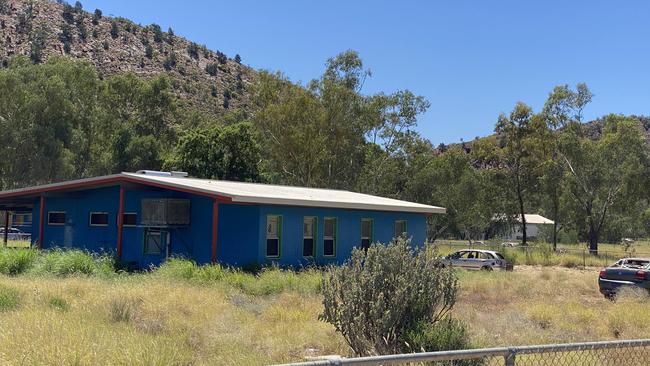Rent hike for NT remote housing tenants as cost of living skyrockets
Experts say new rent hikes for remote housing tenants could push more people on to the streets of Alice Springs. Read how it could affect the population.
Indigenous Affairs
Don't miss out on the headlines from Indigenous Affairs. Followed categories will be added to My News.
A controversial rent hike for remote Territorians could exacerbate overcrowding in Alice Springs town camps, according to Aboriginal service providers.
Aboriginal Housing Northern Territory said the NT government’s rent increase, which will come into effect on February 6 and affect nearly two thirds of the Territory’s lowest income tenants, could leave people in town without a safe place to sleep.
The revised rent structure will introduce a per bedroom based model and comprise of up to 25 per cent of a tenant’s overall fortnightly Centrelink payments.
“We’ve seen the NT Police Commissioner Jamie Chalker (say)...“functionally broken” services in remote communities have been pushing people into Alice Springs since November,” Aboriginal Housing NT chief executive Skye Thompson said.
“We’re concerned that the framework will compound these cost-of-living pressures, and could see even more people in remote communities move into towns like Alice Springs.”

Ms Thompson said services knew the overwhelming majority of youth crime rates are linked to poverty and substance abuse.
“While the announcements last week may reduce access to alcohol, the (rental) framework will put more pressure on people who are already overwhelmingly living below the poverty line.”
Housing and Homelands Minister Selena Uibo said the new framework would streamline the management of tenancies and enable funds to be channelled into repairs, maintenance and upgrades.
In a statement she said it readied “the remote housing sector for management by Aboriginal-controlled community housing.”
The government contests the model is fair, consistent and affordable.
Ms Uibo said it provided tenants with a safety net that means they will not pay more than 25 per cent of their household income.
“While some tenants will be paying increased rent, this is in line with consumer price index increases and is the first rental increase in more than a decade,” said Ms Uibo.

However, Centrelink payments have not inflated in line with CPI and reductions in welfare since Covid-19 relief payments have been widely criticised as a reason for increased petty theft in communities like Alice Springs.
“We are sensitive to the fact that rent will increase for some households in remote public housing...it provides a standard means for setting rent, reduces the red tape burden and supports sustainable rent collection in remote communities to help fund the cost of improving remote housing in the long term,” Ms Uibo said.
Ms Uibo reiterated the government had wiped $69.7m in debt related to 7746 remote housing tenants accrued between 2010 and December 2021, despite the decision being made after the Northern Territory Civil and Administrative Tribunal found the government, as a landlord, responsible for providing remote residents with “safe and habitable” housing.
It comes as the National Partnership for Remote Housing NT is rolled out, which included $550m investment from the Commonwealth and nearly $1.1bn from the Territory government.
However after signing the agreement in 2019 the Territory government has only spent $709m, of which $331m was Territory funding, to build an additional 1525 rooms across 70 remote communities.

Based on these figures by the NT government each bedroom costs almost half-a-million dollars, averaging $464,000.
The program that was intended to address overcrowding has only reduced the problem by 3 per cent in four years.
According to the government’s own HomeBuild website approximately 55 per cent of remote homes still reported overcrowded living conditions.
The Commonwealth Auditor General’s Annual Report from last year said only 19 per cent of capital works targets had been met.
The auditor said the program was “partially effective” marred by “significant weaknesses” and called for the implementation plan to be revised.
The report said the government “had not been effective in managing the risks associated with the potentially conflicting priorities of the National Partnership: completing a large program of work in just over four years, while ensuring that housing quality is improved, Aboriginal communities are effectively involved in decision-making, and local Aboriginal people and businesses deliver the work.”
Clarification: An earlier version of this story said the revised structures were part of the National Partnership for Remote Housing NT. That is not the case. The story has been updated.




